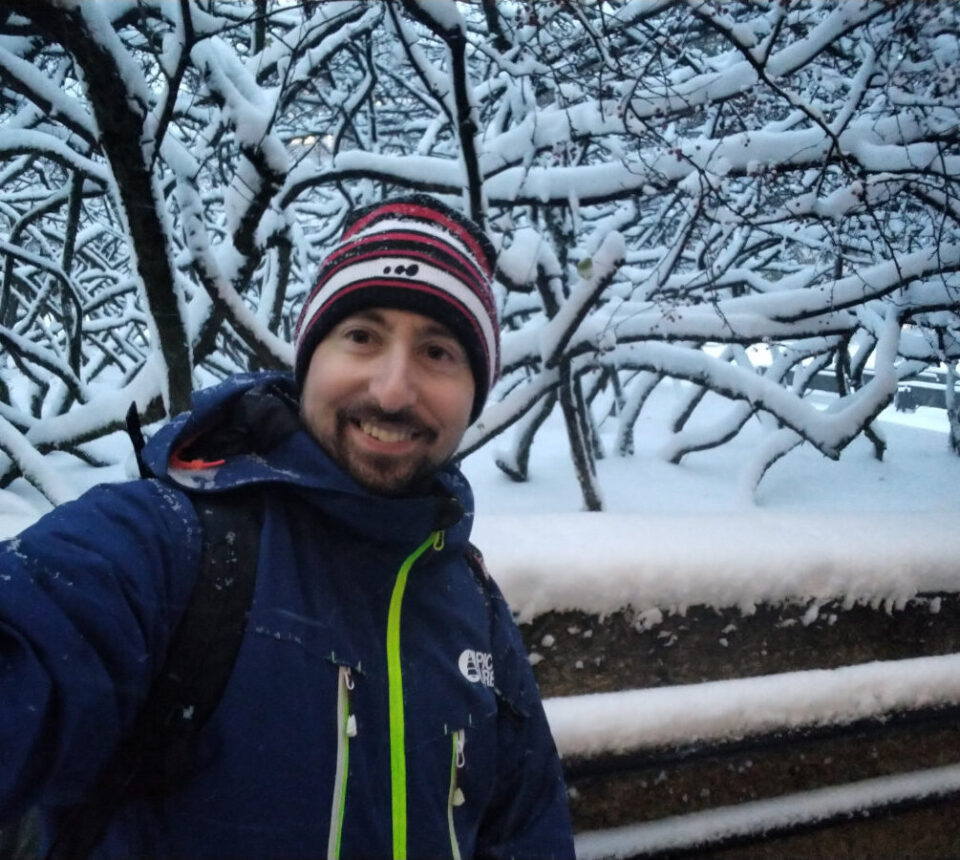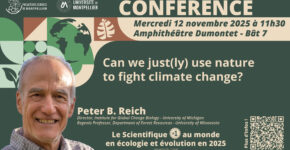Paul Antonio: Journey to the heart of the Earth
Paleomagnetism researcher at the Geosciences MontpellierPaul Antonio has been awarded a European Research Council (ERC) grant for his proposal of a new experimental method to refine the dating of the Earth's inner core. of the Earth.

Customizing a machine to make rocks born around a billion years ago speak - this is the idea with which Paul Antonio is definitively confirming his career. The young paleomagnetism researcher at the Géosciences Montpellier laboratory won't be going back to teaching life and earth sciences, as last September he was awarded an ERC Starting Grant for his proposal of a new experimental method to refine the dating of the Earth's inner core.
His UBEICH project is highly topical, since the scientific consensus that dates the creation of the inner core at around 600 million years has been called into question. This is a crucial moment, as it corresponds to the crystallization of the central part of the core, then liquid, which provided the energy needed to revive the Earth's magnetic field. The latter makes our planet habitable by protecting it from cosmic radiation. The formation of a hard core enabled the Earth to escape the fate of other planets like Mars, which lost their magnetic field early in their geological history.
Billions of magnetic inclusions
" During my two years as an ATER at the University of Montpellier, I had time to discover the laboratory's range of instruments. And I thought I could adapt it for my research ", says Paul Antonio. The challenge is to measure the intensity of the magnetic field contained in rocks dating back around a billion years, in order to trace the history of terrestrial magnetism at that time. Conventional approaches fail to extract ancient magnetic signals from old rocks due to their alteration throughout their geological history.
Paul Antonio proposes to measure these signals directly at the mineral scale, rather than at the rock scale. " The advantage is twofold: silicate minerals contain billions of magnetic inclusions that have been preserved from alteration, and the small size of these inclusions has potentially enabled a stable magnetic signal to be recorded over time ", explains the researcher. In concrete terms, rather than working on rock cores a few centimetres in size, he will first crush them to extract the crystals. " Then we'll have to adapt the UM's equipment to work with samples of the order of a millimetre ", he adds.
Supercontinent Rodinia
The idea of applying for an ERC was whispered to him. " I had submitted several projects during my ATER years, notably for a Marie-Curie research grant, which was turned down despite a very good assessment. As a result, the UM DIPA department encouraged me to submit an ERC Starting Grant. Good for him. Especially as the researcher already had plenty to work with. As part of a post-doc on the study of the supercontinent Rodinia, which existed a billion years ago, he has collected numerous rock cores that correspond precisely to the period of crystallization of the inner core.
Today, he looks back, almost astonished, on a career path he had not anticipated into research. In Master 1 preparation for the Capes SVT, " a teacher impressed by my passion for geology encouraged me to continue with a Master's degree in research ". There, a visiting professor from Brazil invited him to come and do a thesis in paleomagnetism. The subject: refining the position of the South American continent 1.8 billion years ago, when all the continents were grouped together in a single supercontinent, the Columbia. " The fieldwork - collecting rock samples in the Amazon - convinced me to accept the project," he recalls.
From São Paulo to Saverdun
In 2012, Paul Antonio flew to Brazil to discover paleomagnetism. On his return in 2016, with no post-doc in sight, he finished writing his thesis while gaining tenure as a secondary school teacher in an Ariège secondary school. Without transition, he moved from Sao Paulo to Saverdun. " I love teaching, but I missed the life of a researcher. I finally decided to set up my own post-doc project. Strategically, he applied for funding from a public funding agency in the State of São Paulo. Which he obtained. " It wasn 't easy to go back to Brazil, but it was a way of working on my own research project because there were no opportunities in France. "
The object of his research has shifted by a few billion years. Through the direction of the magnetic field of rocks formed at that time, he is looking for the position of Africa and South America within the supercontinent Rodinia. Today, Paul Antonio is speaking to us by videoconference from Oslo, where he is starting another post-doc at the new Norwegian Center of Excellence on Habitability (PHAB) - a post-doc he applied for " because the probability of winning an ERC on the first try is almost nil, and it was a unique opportunity to develop my research in one of the world's leading laboratories ". But here he is, the happy winner of an ERC. After his international career, he will return home in January 2024 to build up a team of four people and fully embark on his career as a researcher in Montpellier.
